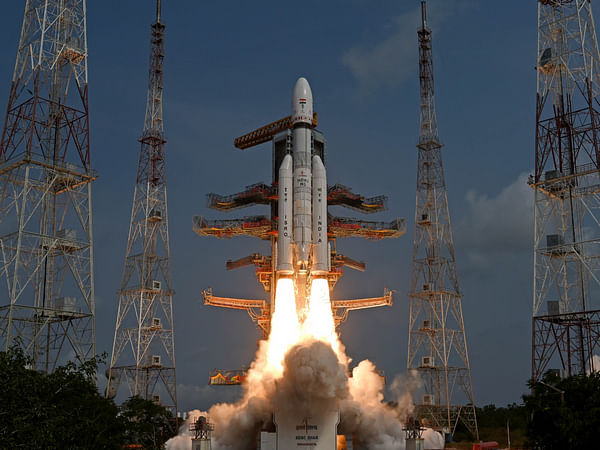The Union Cabinet has approved the Indian Space Policy 2023, which aims to establish regulations for the roles and responsibilities of various outer space-related institutions such as the Indian Space Research Organisation, NewSpace India Limited, and private sector entities. While the industry is satisfied with the provisions, they are waiting for the finer details regarding investments, including foreign direct investment, and tax rebates for research and development expenses. ISRO has held a monopoly over all aspects of space programs since its inception and has been facilitating the private sector through transfer of technology MOUs and components contracts. But the government’s decision will increase the role of private entities. However, private sector effectiveness depends on several factors beyond their control that fall within the policy ambit of the government.
The Covid-19 pandemic had a significant impact on the economy but provided a rare opportunity to open India’s domestic outer space industry to the private sector. Private entities would be interested in Low Earth Orbit (LEO) satellites that have greater commercial utility value, such as communication and other network services. However, they must apply for a radio frequency license through country-specific regulatory authorities and then approach the Space Services Department at the International Telecommunication Union (ITU). Additionally, satellites in orbit are regulated by the Committee on the Peaceful Uses of Outer Space (COPUOS) with the United Nations Office for Outer Space Affairs (UNOOSA), where only governments are members, not private entities.
Merely allowing the private sector to play a more substantial role in the overall space programme, including manufacturing launch vehicles, satellites, and other space-based services, will not earn revenue for the industry unless they can monetise these deployments. Most space-based assets have a shorter lifespan and are highly susceptible to the risk of failure and malfunctioning. Communication satellites need sufficient bandwidth for commercial utility. The government or ISRO can negotiate and procure sufficient bandwidth and construct a radio frequency highway to be leased to private players, much like constructing national highways for vehicles to use after paying toll charges.
Also read: Bengaluru firm has eyes in sky to fix problems on ground. Crops, insurance claims, floods
History, future of space exploration
Almost sixty-six years ago, on 4 October 1957, space scientist Sergei Korolev from the USSR launched the first man-made object into outer space — a basketball-sized artificial satellite weighing 85 kg, known as Sputnik. Launched on a large rocket, Sputnik had orbited the earth at a speed of 29,000 km per hour, covering a distance of 70 million km over three months before falling out of orbit in January 1958. Sputnik carried only a low-power radio transmitter that transmitted a beeping noise at regular intervals, with no other cargo on board. The beeping emitted by Sputnik could be heard by radio listeners worldwide, including scientists advising US President Dwight Eisenhower. This event sparked a renewed emphasis on space exploration in the United States, leading to the establishment of the National Aeronautics and Space Administration (NASA) a year later.
This formally started the “Space Race” between the United States and the Soviet Union already engaged in a Cold War, leading to rapid advancements in space technology, including the moon landing, space shuttle launches, and the construction of the International Space Station (ISS). The Soviet Union’s head start in outer space technology was reaffirmed when four years after the launch of Sputnik, Yuri Gagarin became the first cosmonaut to orbit around the earth exactly 62 years back on 12 April 1961. Even the sky was not the limit for human imagination, endeavour and technological progress to take on the forces of gravity which have kept the human beings bound to the earth. Also in 1962, the Indian National Committee for Space Research (INCOSPAR) was set up under the leadership of Dr. Vikram Sarabhai, which later became the Indian Space Research Organisation (ISRO) in 1969 and was brought under the Department of Space (DOS) in 1972.
At the same time, a new space race has begun in recent years, not between nations but between private entities among the affluent sections of the West. This new space exploration is not for science or education but for fun, thrill, and commerce. Amazon founder Jeff Bezoz and the British business tycoon Richard Branson spent about eleven minutes in outer space, followed by the first all-civilian three-day space orbit adventure by SpaceX of Elon Musk.
Space is infinite and belongs to everyone. It is not limited to a select few who know science or math or those who are lucky enough to become astronauts. All those who can imagine space can claim a piece of it. Outer Space is full of inspiration for those who dream big. Still, it is also full of some known and innumerable unknown asteroids that are believed to be rich in metals like platinum, gold, iridium, palladium, osmium, ruthenium, and rhodium. Asteroid mining is an area where India has not yet ventured fully. Only a robust and structured interface between the industry, ISRO, and academic institutions can put India on the infinite Outer Space map, if there can be one.
Seshadri Chari is the former editor of ‘Organiser’. He tweets @seshadrichari. Views are personal.
(Edited by Prashant)



